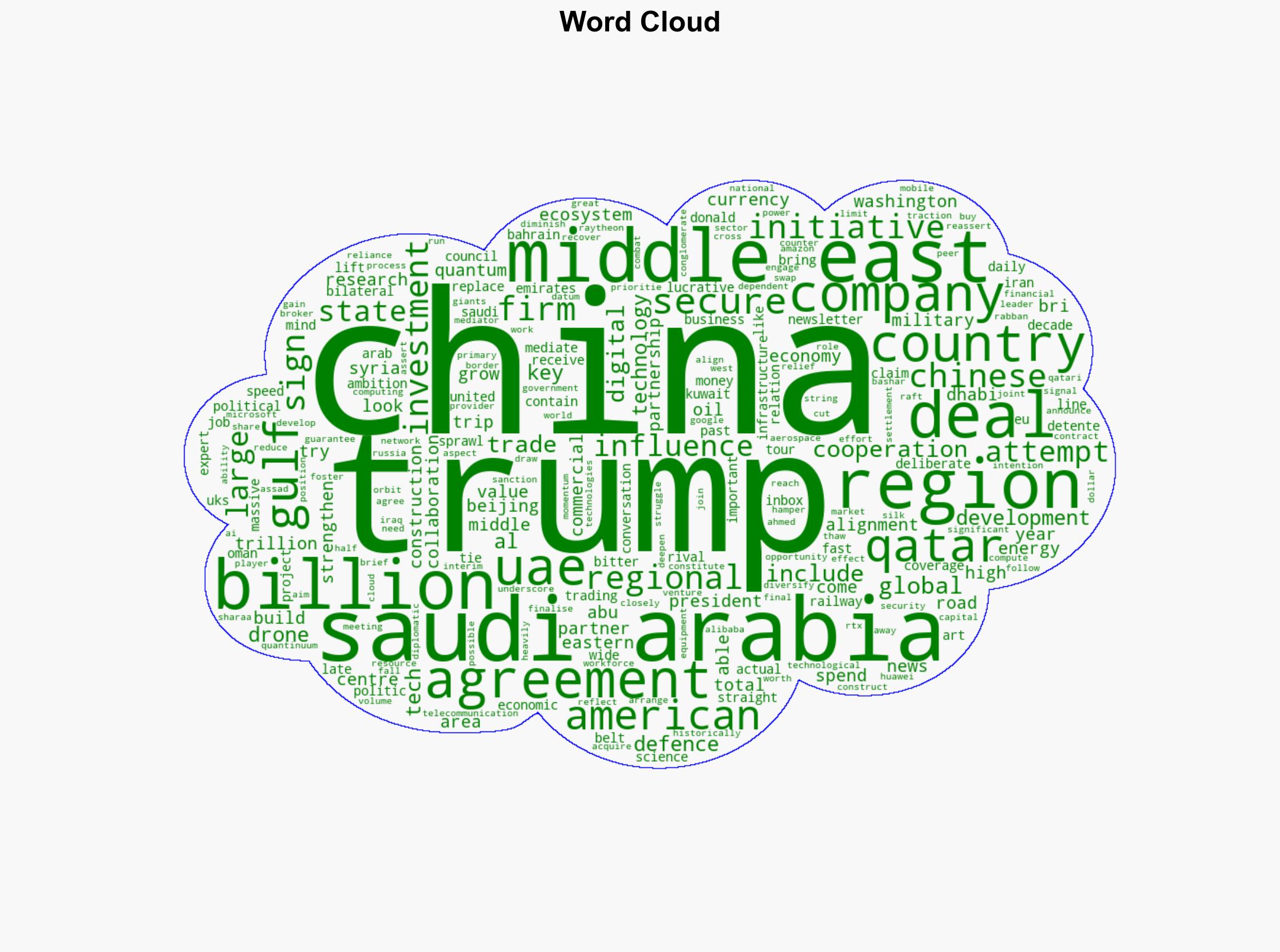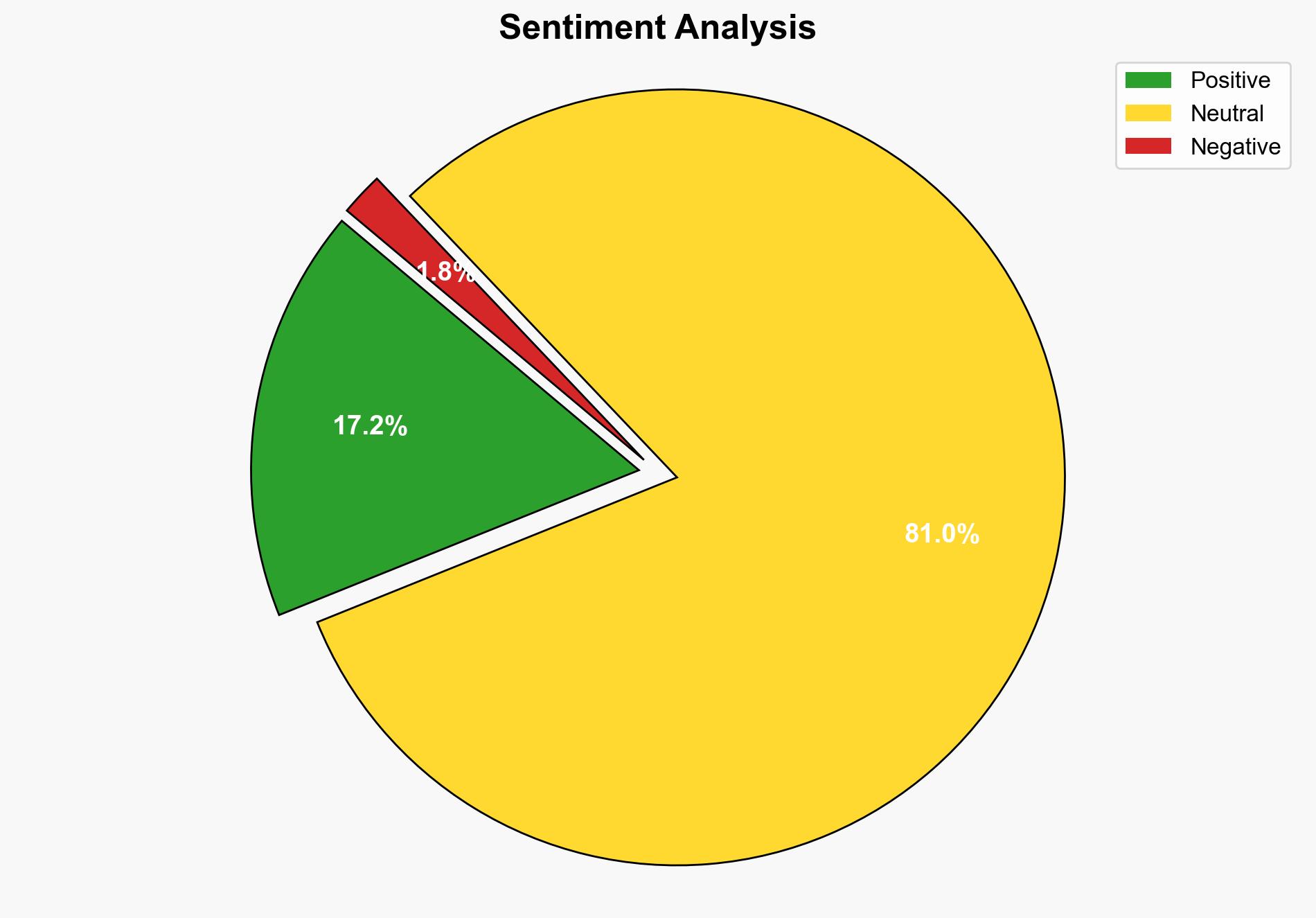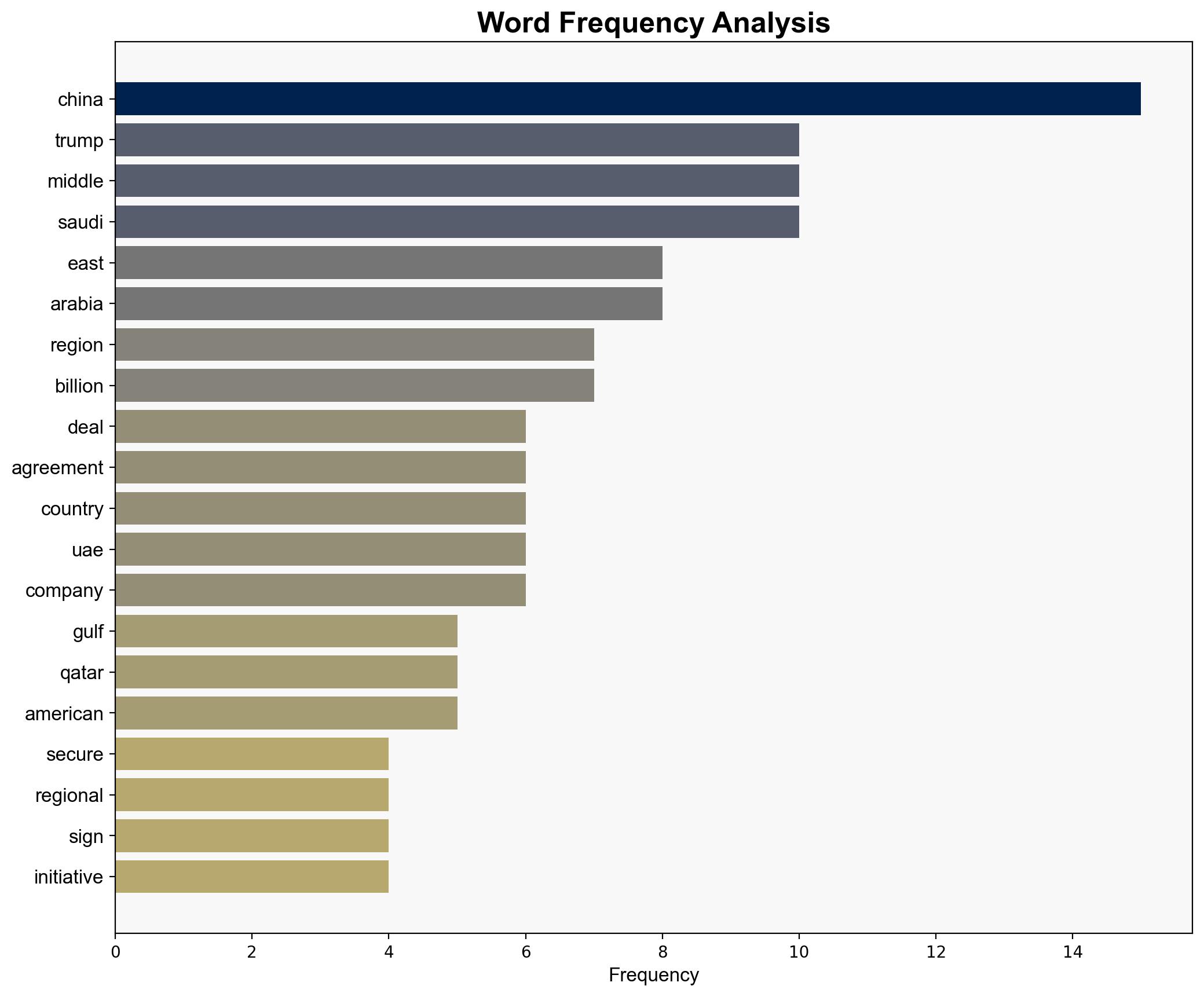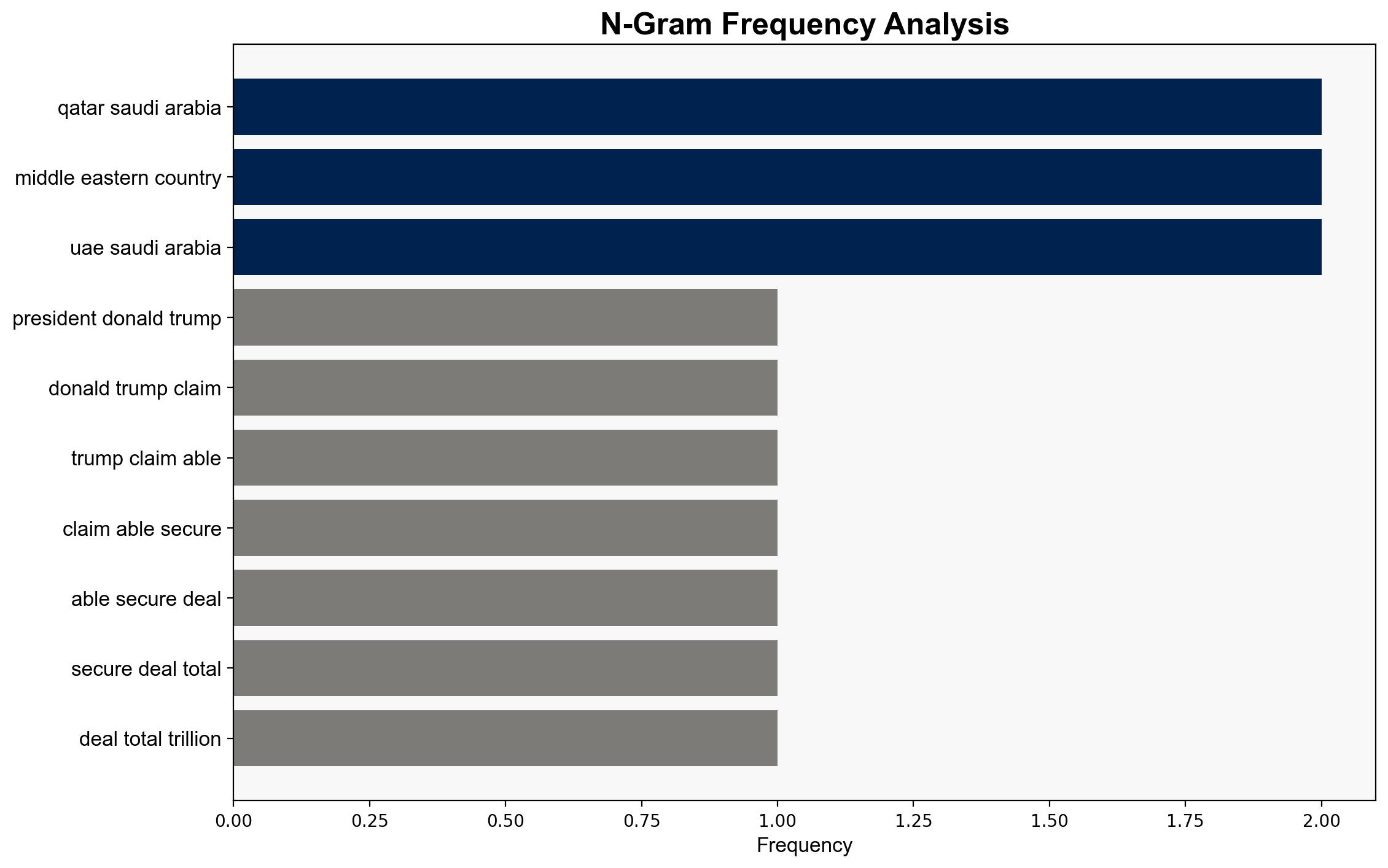Trumps Middle East pivot aims to counter Chinas rising influence – The Conversation Africa
Published on: 2025-06-04
Intelligence Report: Trumps Middle East pivot aims to counter China’s rising influence – The Conversation Africa
1. BLUF (Bottom Line Up Front)
The strategic pivot by Donald Trump towards the Middle East is primarily aimed at countering China’s growing influence in the region. This involves strengthening ties with Middle Eastern countries through economic, technological, and defense agreements. The initiative seeks to reduce China’s economic foothold and align regional powers more closely with U.S. interests. Recommendations include bolstering technological collaborations and enhancing defense partnerships to maintain strategic advantages.
2. Detailed Analysis
The following structured analytic techniques have been applied to ensure methodological consistency:
Causal Layered Analysis (CLA)
Surface events include Trump’s signing of economic and defense agreements. Systemic structures involve the Belt and Road Initiative’s impact on regional trade dynamics. Worldviews reflect a shift towards multipolarity in global influence, with myths centered on the U.S. as a stabilizing force.
Cross-Impact Simulation
The agreements could lead to increased economic interdependence between the U.S. and Middle Eastern states, potentially reducing China’s leverage. However, this may also heighten regional tensions if perceived as a zero-sum game.
Scenario Generation
Scenarios range from successful U.S. re-engagement and reduced Chinese influence to potential backlash from regional actors aligning more closely with China.
Cognitive Bias Stress Test
Biases towards overestimating U.S. influence or underestimating China’s economic resilience were identified and adjusted for a balanced assessment.
Network Influence Mapping
Key influence nodes include economic agreements, defense partnerships, and technological collaborations, with actors such as Huawei and American tech firms playing significant roles.
Narrative Pattern Analysis
The narrative of U.S. resurgence in the Middle East is juxtaposed with China’s portrayal as a reliable economic partner, impacting regional perceptions and alignments.
3. Implications and Strategic Risks
The U.S. pivot may lead to increased geopolitical competition, with potential cyber and economic conflicts. The reliance on technological and defense agreements could expose vulnerabilities if not managed effectively. There is a risk of regional instability if local actors feel marginalized or coerced.
4. Recommendations and Outlook
- Enhance technological partnerships with Middle Eastern countries to counter China’s Digital Silk Road initiatives.
- Strengthen defense agreements to ensure regional security and deter potential adversaries.
- Scenario-based projections suggest a best-case outcome of increased U.S. influence and regional stability, while the worst-case involves heightened tensions and economic decoupling.
5. Key Individuals and Entities
Donald Trump, Huawei, Amazon, Microsoft, Google, Quantinuum, Al Rabban Capital
6. Thematic Tags
national security threats, cybersecurity, counter-terrorism, regional focus





